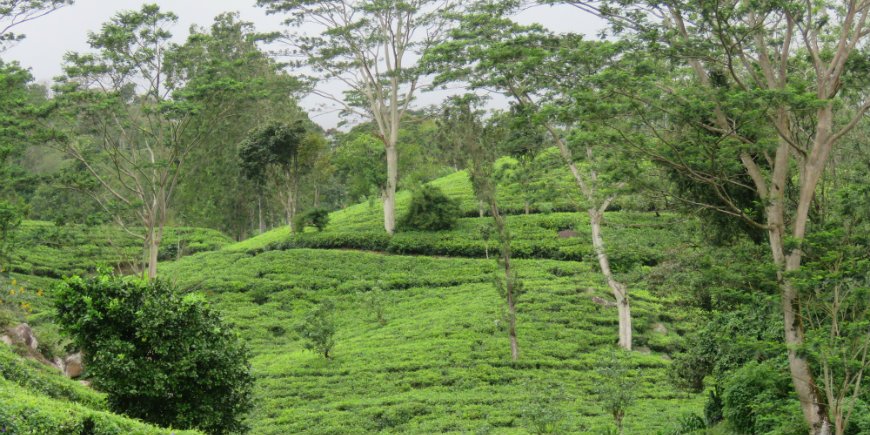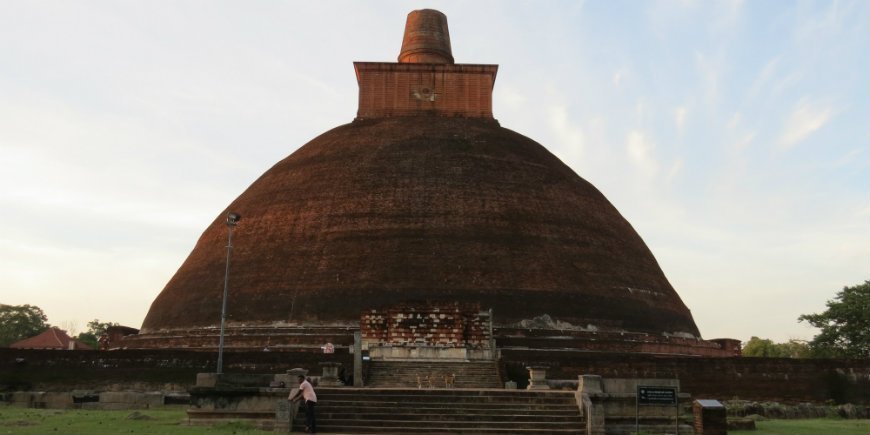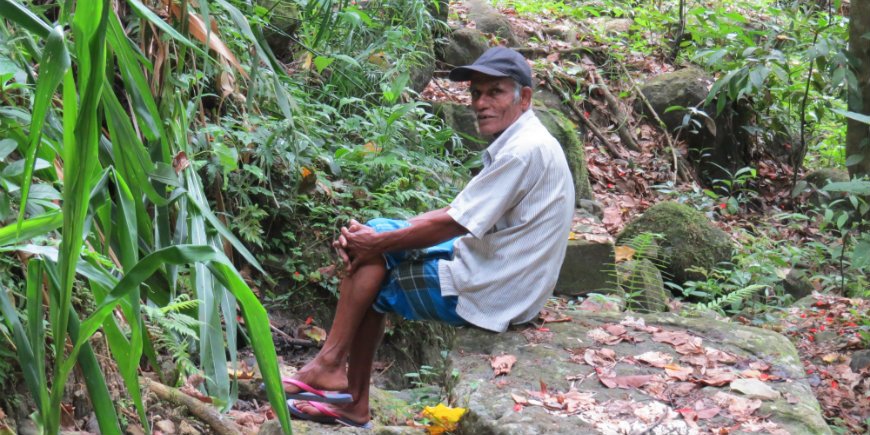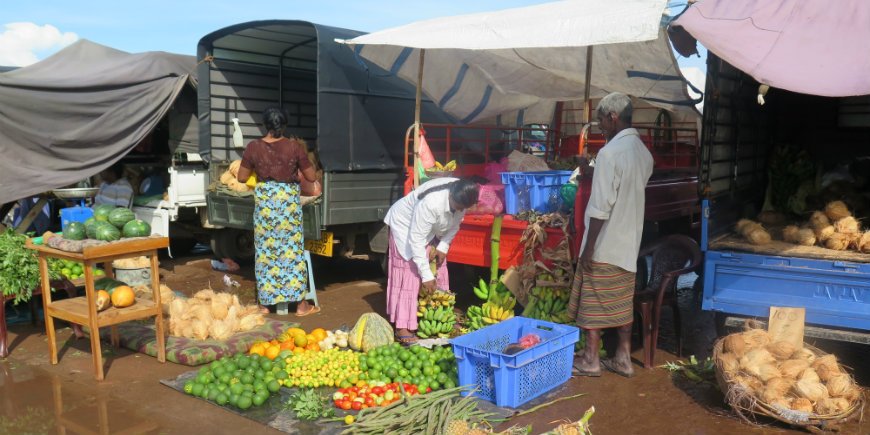Travelogue from Sri Lanka: The Pearl of the Indian Ocean
04/11/2015Below, you can read the travel journal of Kirsten, who visited Sri Lanka in September 2015

Sri Lanka – the rumour is true
I have been reading about Sri Lanka for a long time – about the magnificent cultural heritages, the fruitful nature, the fantastic spices, the welcoming local population, and, especially the country’s many elephants. All travelogues enthusiastically describe the country and now the time is right for me to personally take a good look at it. Now it was my turn to take off and experience everything first-hand.

Sri Lanka has a history that stretches far back in time. A long time before our Christian calendar, the country already had a highly developed civilization with magnificent constructions. The plains north of the highlands are called Rajarata, and this is where one of the UNESCO world heritage sites is located, the ruin city of Anuradhapura, which was a royal and capital city from 300 B.C. until 1000 A.D. The ruin city stretches across a large area and is almost unbelievably large. In the middle of it, the third highest manmade construction, Jetavana Dagoba, is located, surpassed only by two of the pyramids in Giza in Egypt. A dagoba is Sri Lanka’s Buddhist stupa, which is constructed with 90 million red bricks! Fine gravel paths lead to the stairs and take you up to an eight metre high foundation of approximately 230,000 square metres. As is the custom in all religious and holy places in Sri Lanka, one has to take off one’s shoes and walk barefoot around the highly impressive dagoba.

UNESCO has also added the Lion Rock by Sigiriya to its world heritage list. The actual rock is ancient, however at around 480 A.D., an impressive citadel was built here, which is impressive even today from an engineering perspective. The actual palace is located on top of the rock and below it, a water garden has been built on the right part and slightly further inland, the rock garden can be found, and closest to land, the terrace gardens are located. The entire structure used to be surrounded by a crocodile-infested moat and some of it is still left today. It takes more than 1,200 steps to get to the top of the rock and some of them run along a vertical Cliffside. On the way up to the top, you will pass by several old caves that contain beautiful wall paintings of beautiful women. The pictures were certainly meant to please the womanising king who had a harem of 500 women. On top of the cliff, the view of the almost entirely flat landscape is very impressive indeed. The rock was impenetrable, which made it a perfect place to live for an unpopular king, who had seized power via a coup. As a tourist, you will alternate between being speechless and full of utterances of “wow” as the details of this fantastic royal castle unfold.
The entire location is filled with green areas and water. Beginning even as early as 3000 years ago, the kingdom rulers began to dig water tanks – reservoirs, many of which can be found particularly on the plains north of the highlands. They vitalise the natural surroundings and the water can be lead through canals to the rice fields to ensure a safe food supply.

Large areas have during the 21st century been designated as national parks and there are 22 in total. On the lowlands and on the northern plains, some examples are Yala National Park and Minneriya National Park which have elephants, deer and leopards. The tea plantations are located in the cold highlands and the colour of green rows of tea bushes are split up by the pickers who are wearing colourful saris.
The highland also contains another magnificent national park, Horton Plains. When travelling up along the almost 10 kilometre long stretch around the park, it feels like you are in an entirely different country. This is where rhododendrons almost a hundred years old grow, with trunks as thick as thighs. The fog clouds enrich the mosses and lichens which are incompatible with a tropical country!
Along the golden beaches of the cost, palm trees can be seen everywhere, many of them coconut palm trees. The sea is warm and the waves constantly crash against the coast. If the soaring noise from the sea becomes too much, you can also enjoy life by the hotel swimming pool.
The food is really nice and particularly tasteful. It carries a highly Indian flavour and spices are an important component in cooking. Curry, cinnamon, cardamom, cumin, cloves, nutmeg, pepper and juice from fruits such as lemon, orange and coconut are used extensively when cooking and provides a fantastic taste. Rice and vegetables are the basic ingredients in most meals. Everything is available as far as meat is concerned, although chicken and beef is predominant. The prices in restaurants are essentially the same. You will find solid meals (which are almost too big) for less than 6.5 GBP. The cheapest meal I had was a delicious “Rice & Curry” with chicken for 1 GBP at a small local restaurant, where they were not used to tourists – that was almost an experience in itself. Why is that?

It is because everyone in the local population always has a smile on their face, in addition to being very welcoming and helpful. Everywhere you go you are greeted with friendly smiles and interesting questions: “Where are you from? Where is that? What does your language sound like? Would you like to take a picture of me?” and so on. This also applies to the restaurant, where the owner happily told me about her business and that she also owned a small hotel, the profits from which she had used to send her daughter to university. Both Sinhalese and Tamils are colourfully dressed, especially the women’s saris are very beautiful and colourful. However when they go to Buddhist temples to sacrifice or pray, they are all dressed entirely in white and everyone – men, women, children, young and old, tourist and locals – walk barefoot when they enter the temple area.

I rode my bike through a 40 kilometre stretch along small villages and everyone along the byways was waving – from school children to the mechanic who opened his welding mask and greeted me with an almost toothless smile!
Sri Lanka is often called the Pearl of the Indian Ocean. I subscribe entirely to that analogy – Sri Lanka’s reputation is well-deserved!
Kirsten,
TourCompass – From tourist to traveller
